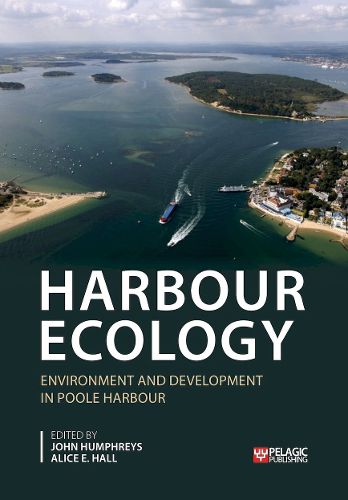Readings Newsletter
Become a Readings Member to make your shopping experience even easier.
Sign in or sign up for free!
You’re not far away from qualifying for FREE standard shipping within Australia
You’ve qualified for FREE standard shipping within Australia
The cart is loading…






This title is printed to order. This book may have been self-published. If so, we cannot guarantee the quality of the content. In the main most books will have gone through the editing process however some may not. We therefore suggest that you be aware of this before ordering this book. If in doubt check either the author or publisher’s details as we are unable to accept any returns unless they are faulty. Please contact us if you have any questions.
Poole Harbour is protected and recognised, both nationally and internationally, for its ecological importance. However, it has also been classified as polluted and ‘eutrophic’. These twin designations - protected yet polluted - exemplify the condition of many English estuaries, making Poole Harbour a useful case study for elucidating the circumstances behind this apparent paradox.
This book consists of four main parts. Part I, ‘Background’, provides a broad introduction to the harbour in terms of its pre-historical and historical significance for human communities and a conceptual overview of its modern character and uses. Part II, ‘Ecology’, contains chapters on subjects ranging from plankton to mammals. Insofar as they also consider anthropogenic aspects of the ecology, these contributions anticipate the remaining sections of the book, which deal specifically with aspects of the ecological service industries supported by Poole Harbour. Part III, ‘Fisheries’, covers recreational and commercial fishing and aquaculture, examining economic value and key shellfish species. Part IV, ‘Water Quality’, addresses those industries for which the harbour’s chemical and biological processes remediate various effluents, as well as some of the environmental consequences and noteworthy efforts to reduce such impacts. Part V, ‘Conclusion’, by the editors looks at certain general shortcomings of environmental legislation and regulation in the case of Poole Harbour.
A central concern throughout is the question of sustainable development in coastal estuarine and marine contexts, making this far-reaching study relevant well beyond the bounds of its primary geographical focus.
$9.00 standard shipping within Australia
FREE standard shipping within Australia for orders over $100.00
Express & International shipping calculated at checkout
This title is printed to order. This book may have been self-published. If so, we cannot guarantee the quality of the content. In the main most books will have gone through the editing process however some may not. We therefore suggest that you be aware of this before ordering this book. If in doubt check either the author or publisher’s details as we are unable to accept any returns unless they are faulty. Please contact us if you have any questions.
Poole Harbour is protected and recognised, both nationally and internationally, for its ecological importance. However, it has also been classified as polluted and ‘eutrophic’. These twin designations - protected yet polluted - exemplify the condition of many English estuaries, making Poole Harbour a useful case study for elucidating the circumstances behind this apparent paradox.
This book consists of four main parts. Part I, ‘Background’, provides a broad introduction to the harbour in terms of its pre-historical and historical significance for human communities and a conceptual overview of its modern character and uses. Part II, ‘Ecology’, contains chapters on subjects ranging from plankton to mammals. Insofar as they also consider anthropogenic aspects of the ecology, these contributions anticipate the remaining sections of the book, which deal specifically with aspects of the ecological service industries supported by Poole Harbour. Part III, ‘Fisheries’, covers recreational and commercial fishing and aquaculture, examining economic value and key shellfish species. Part IV, ‘Water Quality’, addresses those industries for which the harbour’s chemical and biological processes remediate various effluents, as well as some of the environmental consequences and noteworthy efforts to reduce such impacts. Part V, ‘Conclusion’, by the editors looks at certain general shortcomings of environmental legislation and regulation in the case of Poole Harbour.
A central concern throughout is the question of sustainable development in coastal estuarine and marine contexts, making this far-reaching study relevant well beyond the bounds of its primary geographical focus.